
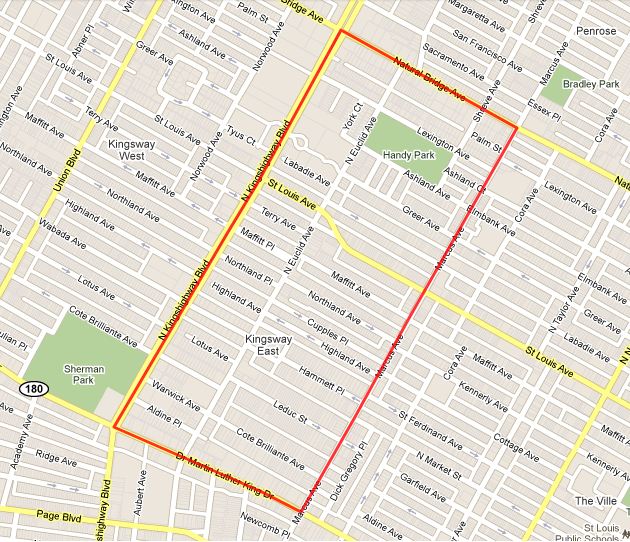 Kingsway East is a north St. Louis neighborhood located south of Natural Bridge Avenue, north of Dr. Martin Luther King Drive, east of North Kingshighway Boulevard and west of Marcus Avenue.
Kingsway East is a north St. Louis neighborhood located south of Natural Bridge Avenue, north of Dr. Martin Luther King Drive, east of North Kingshighway Boulevard and west of Marcus Avenue.
4,322 residents of Kingsway East were counted in 2000. That is a 14% decline from the 1990 census count. It’s 98% black. There were 2,162 housing units, 80% of which were occupied, 52% renters, 48% owners.
The housing stock throughout the neighborhood is widely varied with a nice mix of shotguns, four squares, bungalows and a couple that stand out as true originals:


There are several streets which are beautifully maintained and cared for. These include Wabada Place, Northland Place and Maffitt Avenue.


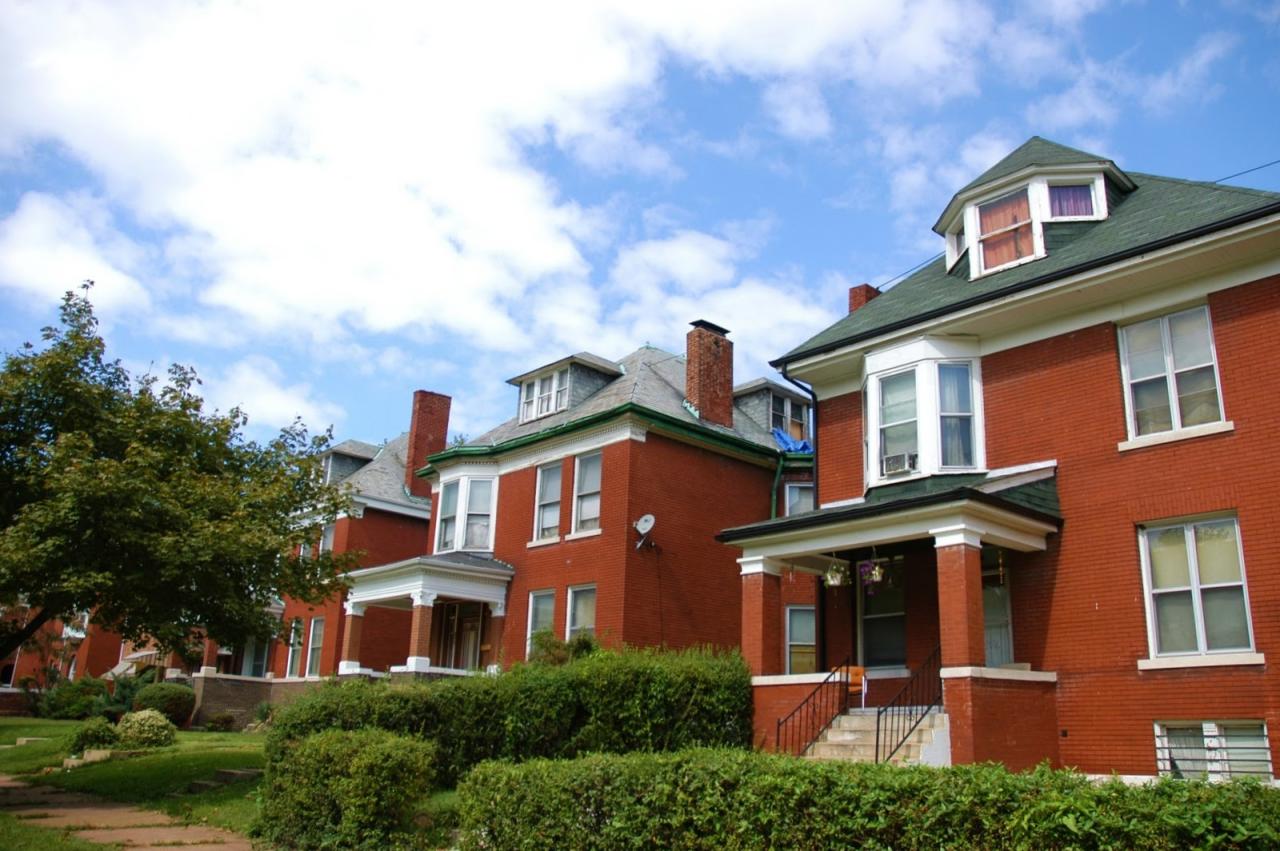



Here are some of the typical homes and street views in Kingsway East:



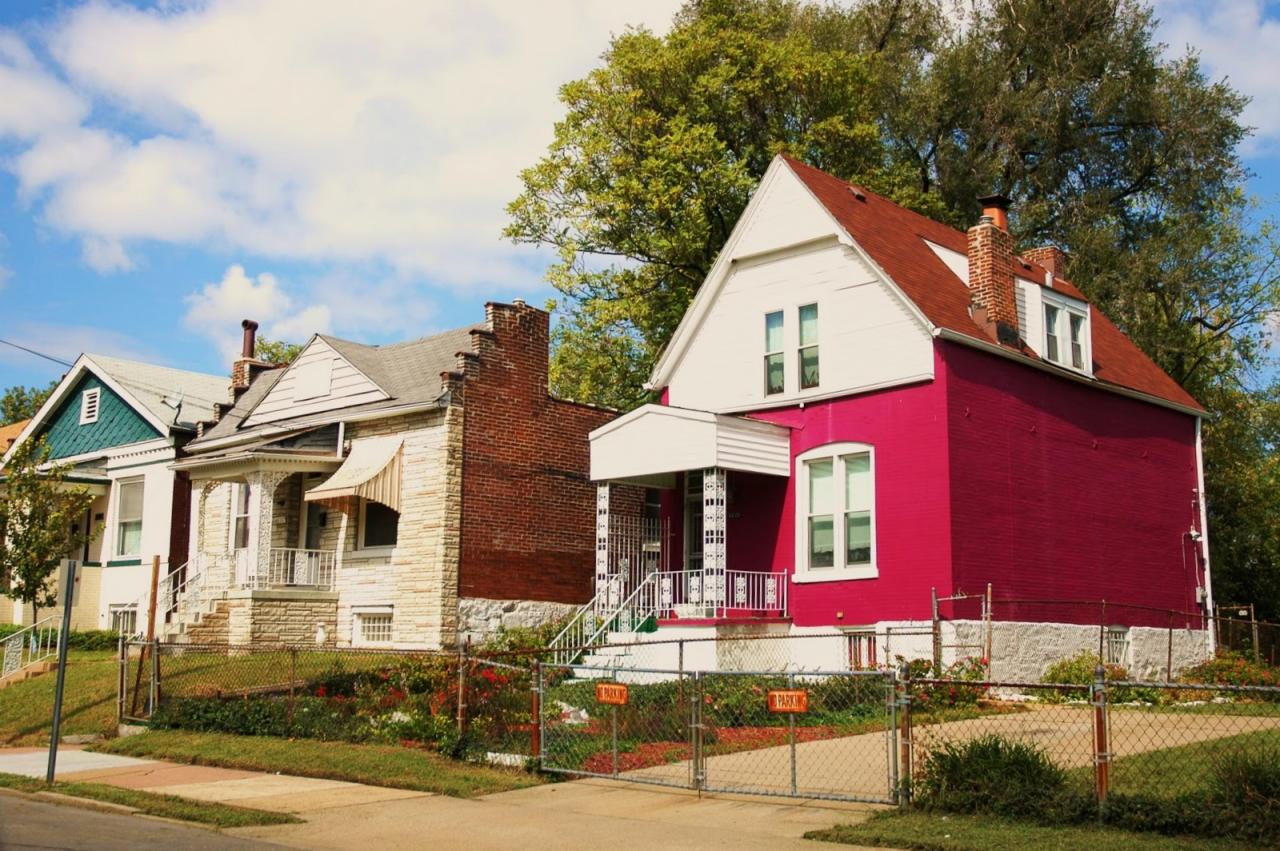

There is a stretch of cool mid-century homes that are like none I’ve seen anywhere in the city so far:



There are quite a few dilapidated, crumbling and abandoned properties too:





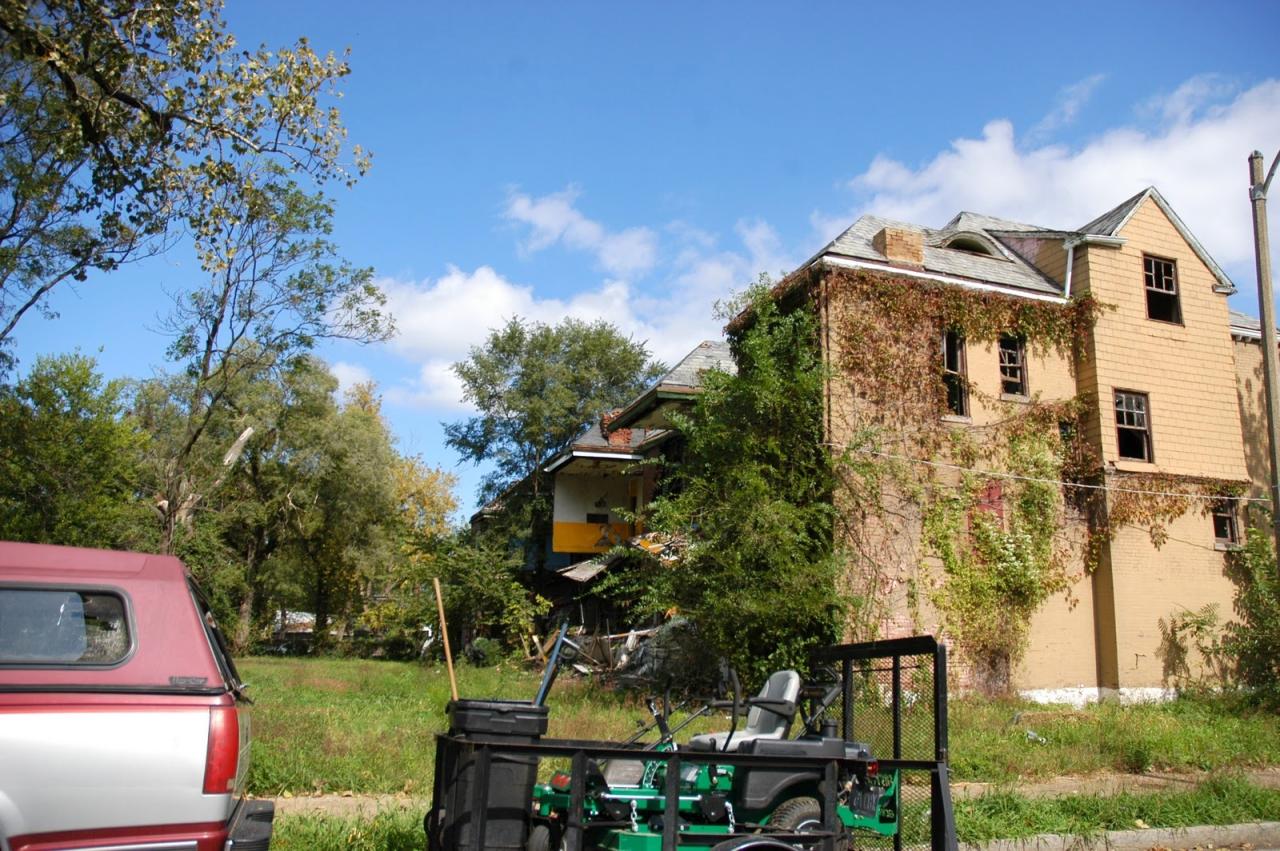
The good news is there aren’t nearly as many acres of cleared/demolished open land area as seen in many other North City neighborhoods, the original housing is largely intact.
Natural Bridge must have once been an amazing commercial corridor in St. Louis. There are several great buildings built in the late 1920’s and early 1930’s. Here are some things that caught my eye along Natural Bridge:


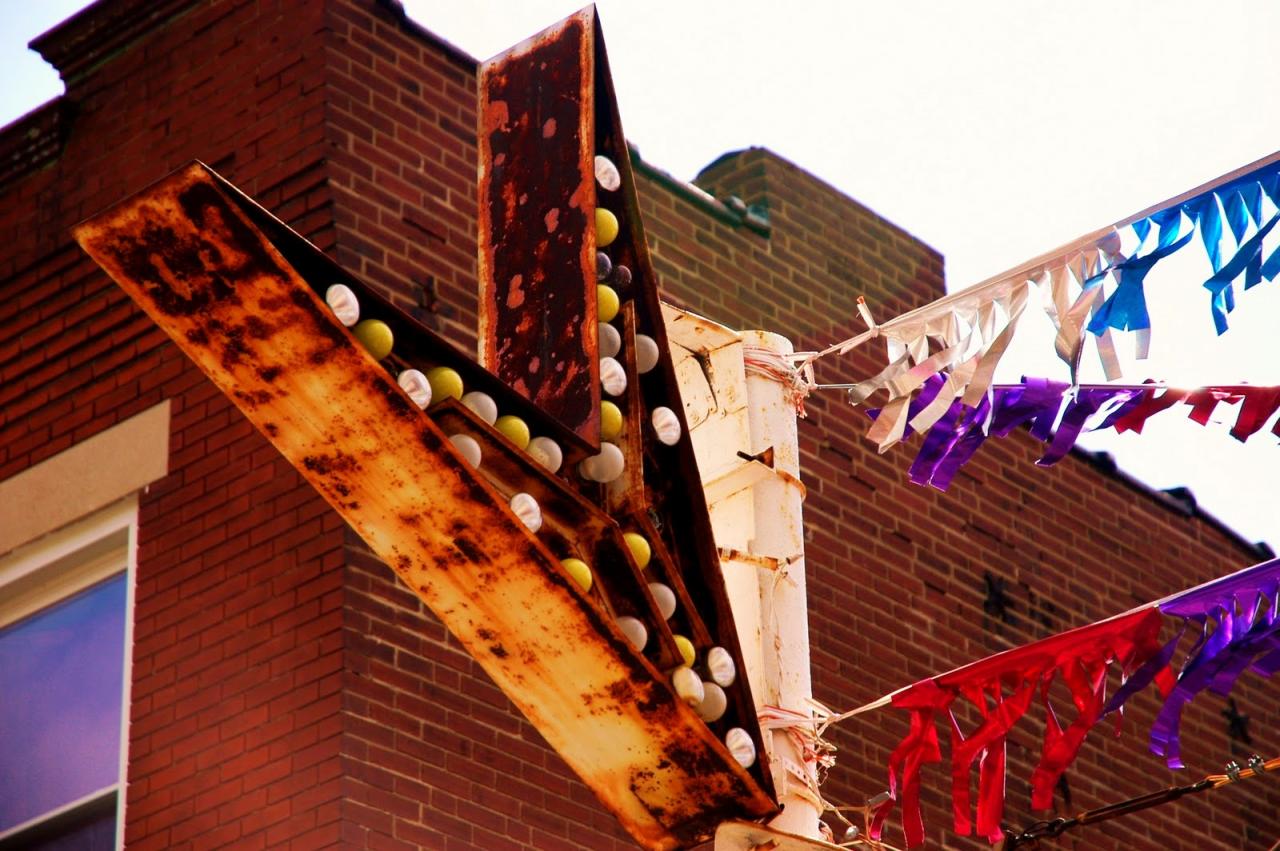



And this gem:




Some other miscellaneous cool sign relics:





There are quite a few open businesses in Kingsway East:



There is a nice 12 acre park at Euclid and Ashland that was quite active on the day of my visit. The park takes it’s name from William Christopher Handy (1873-1958) who is widely known as the “Father of the Blues”. W.C. Handy spent a brief period of time in St. Louis around 1893; enough time to inspire one of his best known works: “St. Louis Blues”, one of the first blues songs to succeed as a pop song. The song was published in 1914 by Handy’s own company. The song gained so much popularity that it inspired the dance step the Foxtrot. Here are the lyrics:
I hate to see that evening sun go down, I hate to see that evening sun go down, ‘Cause my lovin’ baby done left this town.
If I feel tomorrow, like I feel today, If I feel tomorrow, like I feel today, I’m gonna pack my trunk and make my getaway.
Oh, that St. Louis woman, with her diamond rings, She pulls my man around by her apron strings. And if it wasn’t for powder and her store-bought hair, Oh, that man of mine wouldn’t go nowhere.
I got those St. Louis blues, just as blue as I can be, Oh, my man’s got a heart like a rock cast in the sea, Or else he wouldn’t have gone so far from me.
I love my man like a schoolboy loves his pie, Like a Kentucky colonel loves his rocker and rye I’ll love my man until the day I die, Lord, Lord.
I got the St. Louis blues, just as blue as I can be, Lord, Lord! That man’s got a heart like a rock cast in the sea, Or else he wouldn’t have gone so far from me.
I got those St. Louis blues, I got the blues, I got the blues, I got the blues, My man’s got a heart like a rock cast in the sea, Or else he wouldn’t have gone so far from me, Lord, Lord!
The blues have a strong history is St. Louis, one that I am fascinated by and you can really feel it. The blues and early country music were written to mix sadness with joy. A drive through Kingsway East today will likely fill you with the same emotions evoked by good blues, jazz and country; there are scenes of sadness and neglect mixed in with beauty and relics of the time when St. Louis was alive and kicking. Kingsway East is holding on.

 Kingsway East is a north St. Louis neighborhood located south of Natural Bridge Avenue, north of Dr. Martin Luther King Drive, east of North Kingshighway Boulevard and west of Marcus Avenue.
Kingsway East is a north St. Louis neighborhood located south of Natural Bridge Avenue, north of Dr. Martin Luther King Drive, east of North Kingshighway Boulevard and west of Marcus Avenue.
